Le Pigeon ramier est le plus grand des pigeons d’Europe, il est nettement plus grand et plus trapu que les autres pigeons. La gorge est rose-pourpre, tirant vers le gris pâle sur le ventre.
Pigeon Ramier
En Vol
Pigeon Ramier
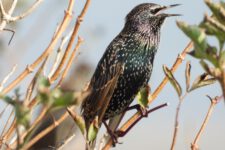
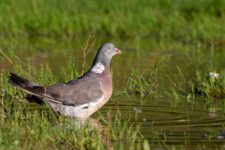
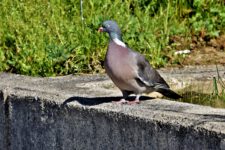
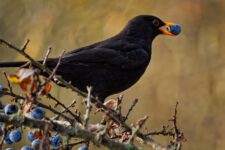
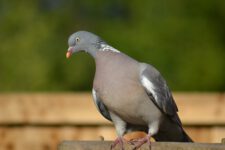
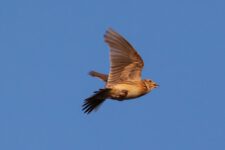
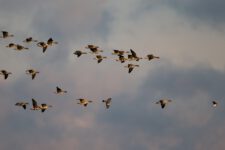
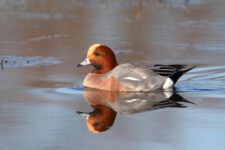
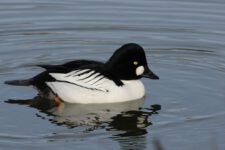
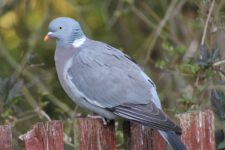
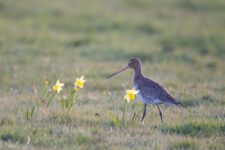
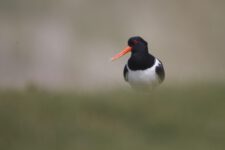
Extrait du rapport de stage de Maîtrise Université de Rouen-IMPCF de Hugues SANTIN-JANIN Septembre 2004.
Photographié par : Florian Weber
Espèce : Pigeon ramier / Columba palumbus
Nom anglais : Woodpigeon Famille : Columbidae
Taille : 41cm
Envergure : 75-80
Poids : 450 à 520 grammes
Longévité : 16 ans
Aspect
Le Pigeon ramier est le plus grand des pigeons d’Europe, il est nettement plus grand et plus trapu que les autres pigeons. La gorge est rose-pourpre, tirant vers le gris pâle sur le ventre. La tête est grise, avec des taches blanches bien nettes sur le côté ou le cou (sauf chez les jeunes, plus ternes). Les cuisses, les pattes et les pieds sont jaunes. La queue est large, et présente une large bande foncée à son extrémité. En vol, une ligne blanche traversant le milieu de l’aile devient bien visible. Son bec est légèrement crochu (à la différence des autres pigeons européens), ce bec est fait pour déchirer les feuilles. L’autre nom du Pigeon ramier est la Palombe.
Répartition Géographique
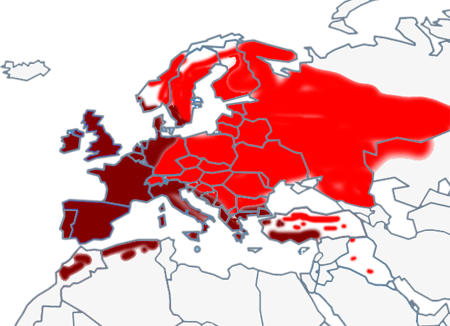
 : ( tiré de CRAMP, 1985 )
: ( tiré de CRAMP, 1985 )
 : Présent toute l’année
: Présent toute l’année
Présent uniquement en période de reproduction
En France, on peut observer des individus nicheurs, migrateurs et hivernants. Cette espèce est très commune sur l’ensemble du territoire National. On le retrouve dans les campagnes ouvertes de tous types, à condition d’être parsemées de quelques arbres. Mais aussi dans les bois clairs, lisières de forêts mixtes, parcs et jardins publics boisés, à proximité de cultures et de champs pour l’alimentation. Ainsi, on le retrouve partout en Europe, dans les zones rurales, mais aussi, dans les faubourgs et au cœur des villes.
Reproduction
L’aire de reproduction de ce pigeon s’étend des contrées maritimes et méditerranéennes du vieux continent jusqu’aux contreforts occidentaux de l’Himalaya, sous des latitudes comprises entre 30° et 65° N. La nidification a lieu depuis le niveau de la mer jusqu’à 3000m dans la partie la plus asiatique de l’aire de répartition.
La période de reproduction diffère selon les localités, et les types d’habitats. Par exemple, la nidification des Pigeons ramiers urbains britanniques débute déjà dès la fin février alors que celle des ruraux, n’est pas observée avant la mi-mars, et parfois même, la mi-avril (CRAMP, 1985). Globalement, les oiseaux originaires des régions méridionales et occidentales se reproduisent plus tôt que les autres, car les facteurs climatiques y sont plus favorables et les ressources alimentaires plus disponibles. En France, les Pigeons ramiers les plus précoces nichent à partir seulement de la fin mars ou du début d’avril. Voici les principales caractéristiques de la reproduction du pigeon ramier:
Nombre de couvaisons : deux à trois couvées, selon la quantité de nourriture disponible
Nombre d’œufs : 2 œufs blancs
Incubation : 17 jours (2 sexes)
Nid : Le Pigeon ramier niche dans les rangées d’arbres de toutes les essences, dans les nids de corneilles abandonnés et les nids d’écureuils, parfois, à même sur le sol ou sur les rebords de bâtiments urbains. Le nid rudimentaire est composé de quelques branches laissant deviner les œufs
Type de nichoir : N’utilise pas les nichoirs
Envol : 20 à 35 jours
Emancipation : 42 jours environ
Emancipation : 42 jours environ Taux de survie : 64 %
Les couples sont fidèles au cours d’une même saison de reproduction et peuvent demeurer unis, dans certains cas, plusieurs années consécutives
MigrationL’espèce est migratrice partielle (migrateur diurne). Les oiseaux des régions tempérées et méridionales d’Europe n’entreprennent pas de migration, alors que les oiseaux des régions nordiques et continentales s’expatrient pour aller passer la » mauvaise saison » sur la façade atlantique de l’Europe, dans la Péninsule Ibérique, le Nord des rivages méditerranéens, la Turquie et le Moyen-Orient.
Dans notre pays, les oiseaux sédentaires sont rejoins dès la fin de septembre, par de nombreux migrateurs (Yeatman, Berthelot&Jarry, 1994). Ceux-ci convergent vers l’extrémité occidentale des Pyrénées. La traversée des cols du Pays Basque, vers les quartiers d’hiver Ibériques, donne lieu à des concentrations locales parfois spectaculaires. CRAMP (1985) situe le pic de passage de la migration postnuptiale en France entre le 10 et le 20 octobre. Il situe la migration de retour en Europe entre mars et avril.
Depuis une dizaine d’années, la culture du maïs, qui s’étend à présent dans tout le Sud-Ouest, a radicalement modifié les habitudes ancestrales des oiseaux qui s’installent de plus en plus nombreux au pied des Pyrénées dont ils renoncent à franchir les cols. Le développement de cet hivernage semble concerner les populations d’origine medio-européenne.













